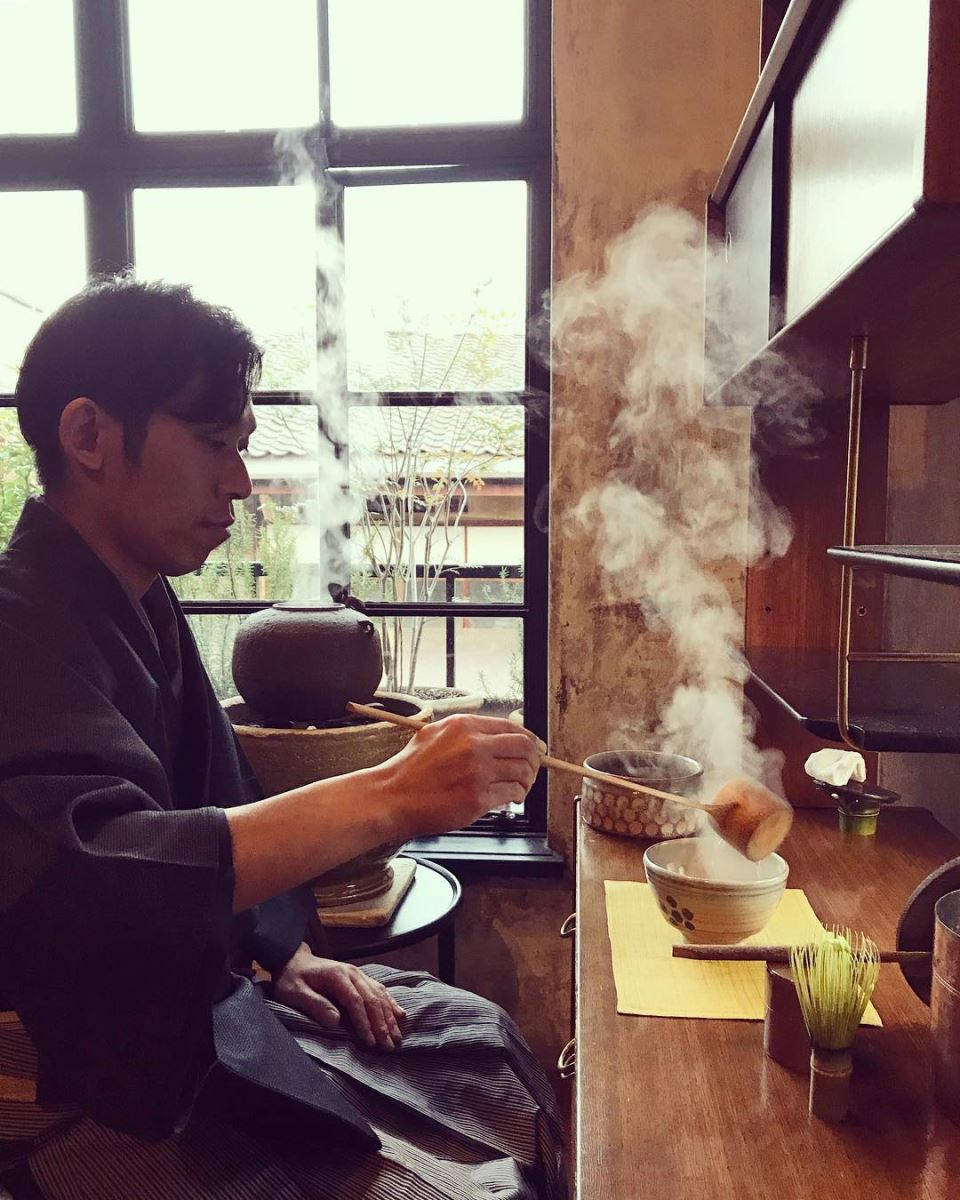Traveling to Japan is a wonderful experience for those who love culture and are passionate about discovery. Japan is famous for its rich cultural history, unique architecture, diverse cuisine and beautiful natural landscapes. But, what is the best month to travel to Japan, what is the best time to travel to Japan, what time of year is it best to visit Japan, when is the best time to visit Japan? Let’s check out our suggested best time to go to Japan, best season to go Japan (best season to travel to Japan, best season to visit Japan) as well as, cheapest, worst and most most expensive time to visit Japan as follows!
- JR Rail Pass Guide. All things you need to know, how to buy, how to use along with Japan Rail Pass FAQs
- When is the best time to visit Kyoto? — The best, worst, affordable & best season to visit Kyoto
- Kyoto travel tips — 12+ Kyoto insider tips & things to know before going to Kyoto
- Tokyo airport to Tokyo city — How to get from Narita Airport to Tokyo & from Haneda Airport to Tokyo?
- 7 days in Japan itinerary: Suggested 1 week in Japan itinerary for what to do in Japan for 7 days


As a country with countless cultural activities and festivals, events held all year round, not every time is considered ideal for tourists to explore Japan. If you want to visit the ancient temples in the ancient capital of Kyoto or the gentle pink color of cherry blossoms, you definitely need to make a plan to avoid coming during the rainy season or after the flowers have faded.
Which season to travel to Japan is both cheap and beautiful, and which season is both expensive and boring? Experts say that the best time to visit Japan depends a lot on the destination tourists choose to explore in the “Land of the Rising Sun”.
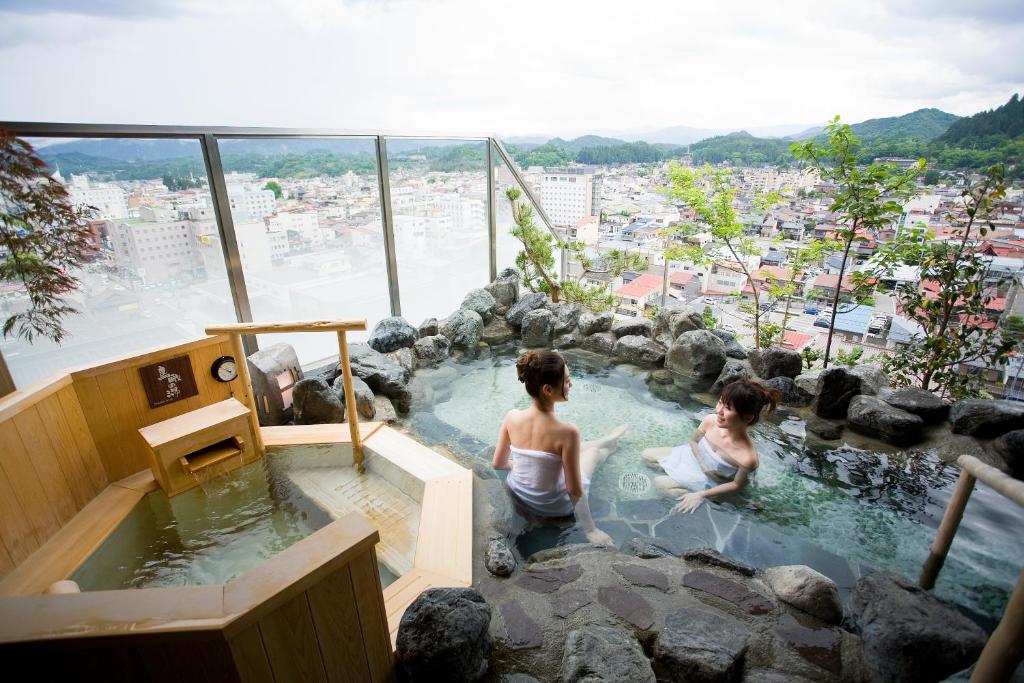

To know which season to travel to Japan and which months of the year are the good, affordable and the best. We invite you to learn about the Japan climate, weather by month, scenery and special things about the seasons of the year in Japan.
Overview of Japan
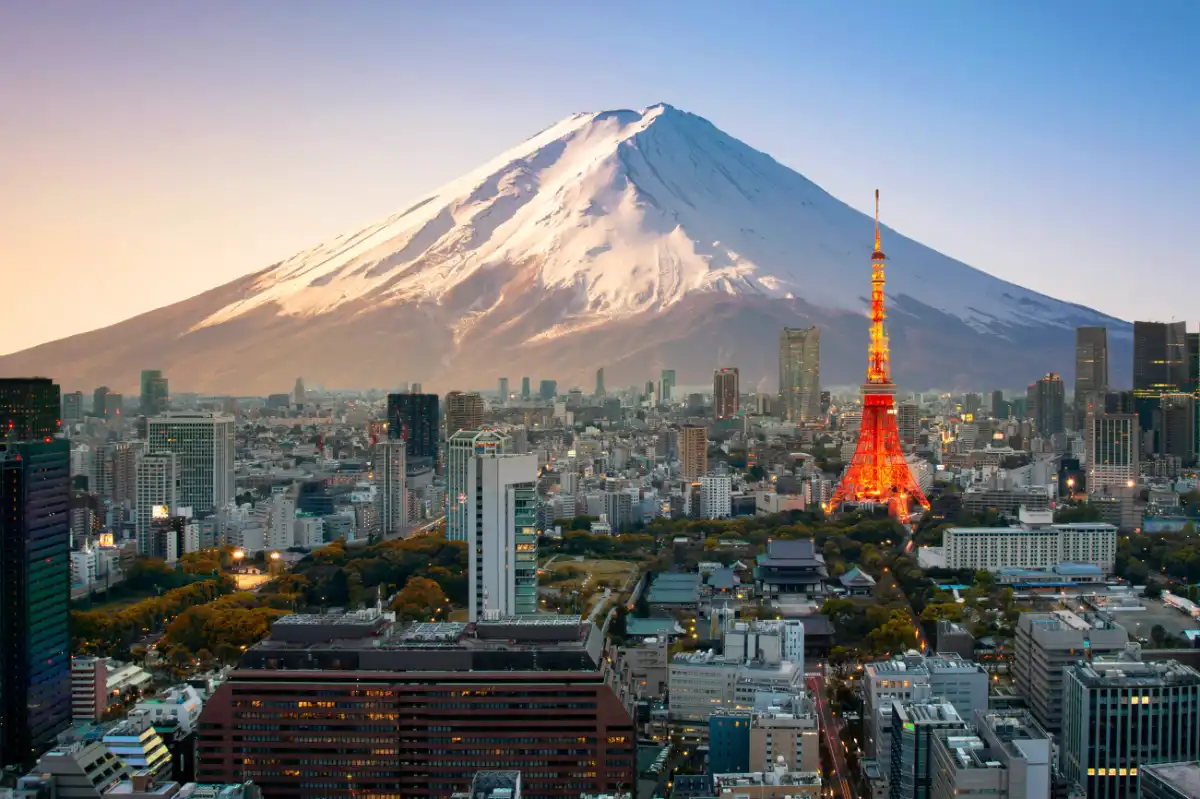
Japan is an island country located in the Pacific Ocean in Northeast Asia. Japan’s territory includes four large island clusters extending from north to south: Hokkaido, Honshu, Shikoku and Kyushu. Therefore, the climate and natural landscape in Japan have quite clear differences between regions. This country is also known by many other names such as the “land of cherry blossoms”, or the “land of the rising sun”.

Japan’s tourism industry is also extremely developed today, a harmonious combination of traditional and modern quintessence. Travel services in Japan are also highly appreciated for their quality. With outstanding infrastructure, beautifully designed Japanese hotels and restaurants serving delicious cuisine, visitors will experience a fulfilling and comfortable trip.


Climate characteristics in Japan
Japan is located in the subtropical temperate zone, so the weather tends to be colder. However, in Japan there are still 4 seasons: spring, summer, fall, and winter in a year and each season will have its own outstanding characteristics that attract many tourists to visit.
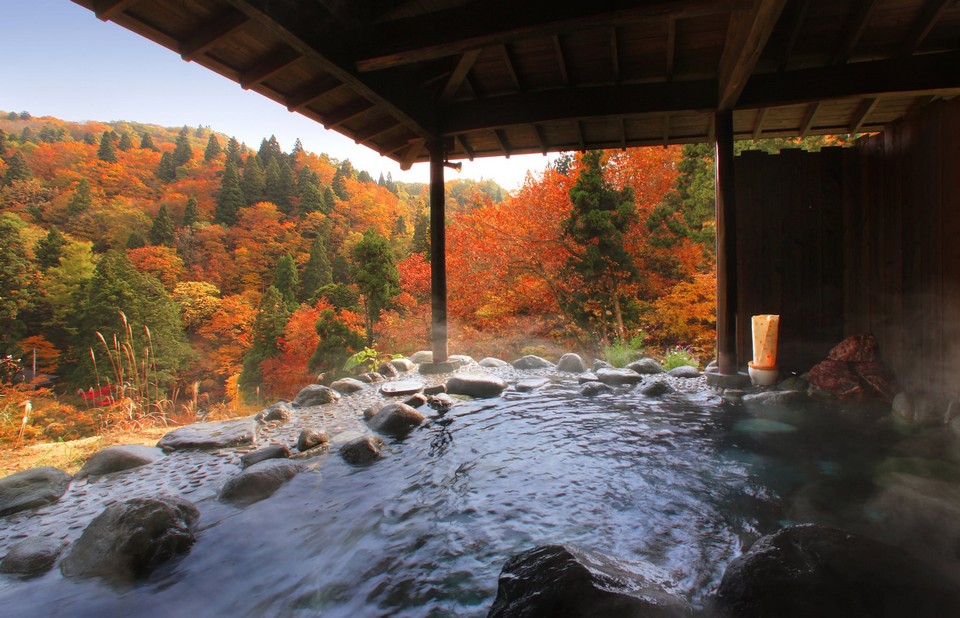
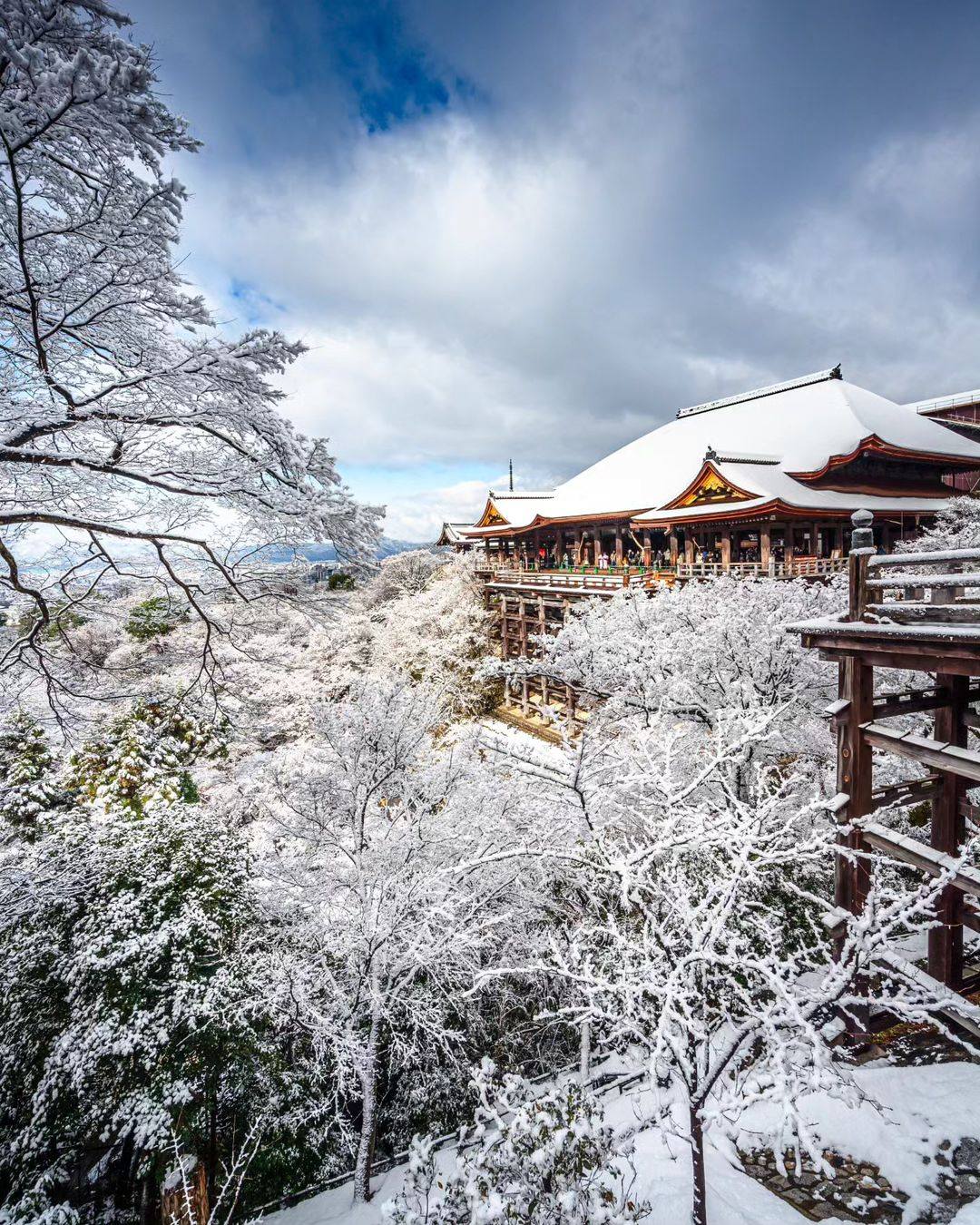
In particular, the weather in each season in Japan will be different between regions. For example, there are places where summer and winter will have a huge difference in temperature, summer is hot and winter is very cold. In some other areas, whether it is winter or summer or other times of the year, the weather is still quite cool and very pleasant, very suitable for sightseeing trips.


When is the best time to visit Japan?
Although Japan is not a very large country, it is enough for visitors to experience different weather between regions. The cold winters in the far north of Hokkaido will be a stark contrast to the warmth of the subtropical islands south of Okinawa. Therefore, the months from March to May (spring) or September to November (autumn) are often considered the best times to visit Japan.


This is the time when visitors can admire the brilliant red, yellow leaves of autumn or dream absentmindedly under the canopy of cherry trees full of flowers. In addition, during these seasons, rainfall is usually low, the sky is clear and the temperature is quite mild.
For those who don’t like heat and humidity, summer in Japan offers a completely different experience. It’s the perfect time of year to explore nature – ideally visiting somewhere cool in the mountains or heading as far north as possible. Cool climates like in Hokkaido are considered “paradise” in the summer, with fields of bright rainbow-colored flowers and countless outdoor activities like hiking and horseback riding.



Summer is also the peak season when traditional festivals often take place. Meanwhile, winter in Japan is the time for sports such as skiing or hot spring (onsen) bathing. Hokkaido’s slopes are ideal for experiencing snow sports. Besides, in regions like Niigata, just take a direct Shinkansen bullet train from Tokyo and visitors can reach extremely good ski resorts. Those who prefer warmth can fly south to Okinawa to experience a warmer subtropical climate.


Best time to visit Tokyo Disneyland
For tourist places such as Tokyo Disneyland, spring and fall are often the best times, with mild climates that make it easy for fun and experiences. Tourists should also avoid national holidays in Japan – especially Golden Week (from April 29 to early May), because this is considered a time when domestic tourists can rest and visit in large numbers of the year.

The best time to see cherry blossoms in Japan

For tourists who decide to visit Japan to see cherry blossoms, special attention should be paid to the weather conditions of that year. Most cherry blossoms usually bloom, begining from the southern tip of Japan around early January. The best time for cherry blossoms to bloom in Kyoto, Tokyo and surrounding areas is usually from the last week of March to the first week of April. But for northern cities like Sapporo, visitors will have to wait until May to see cherry blossoms bloom.

Worst time to visit Japan
Since the weather depends significantly on the regions tourists decide to visit, it is possible for the weather to be bad in one area but the skies extremely clear in another. Japan’s rainy season typically lasts from early June to mid-July across the country – including Tokyo – except in Okinawa, where showers begin in early May. Meanwhile, in Hokkaido, it’s summer mild temperatures and clear blue skies.
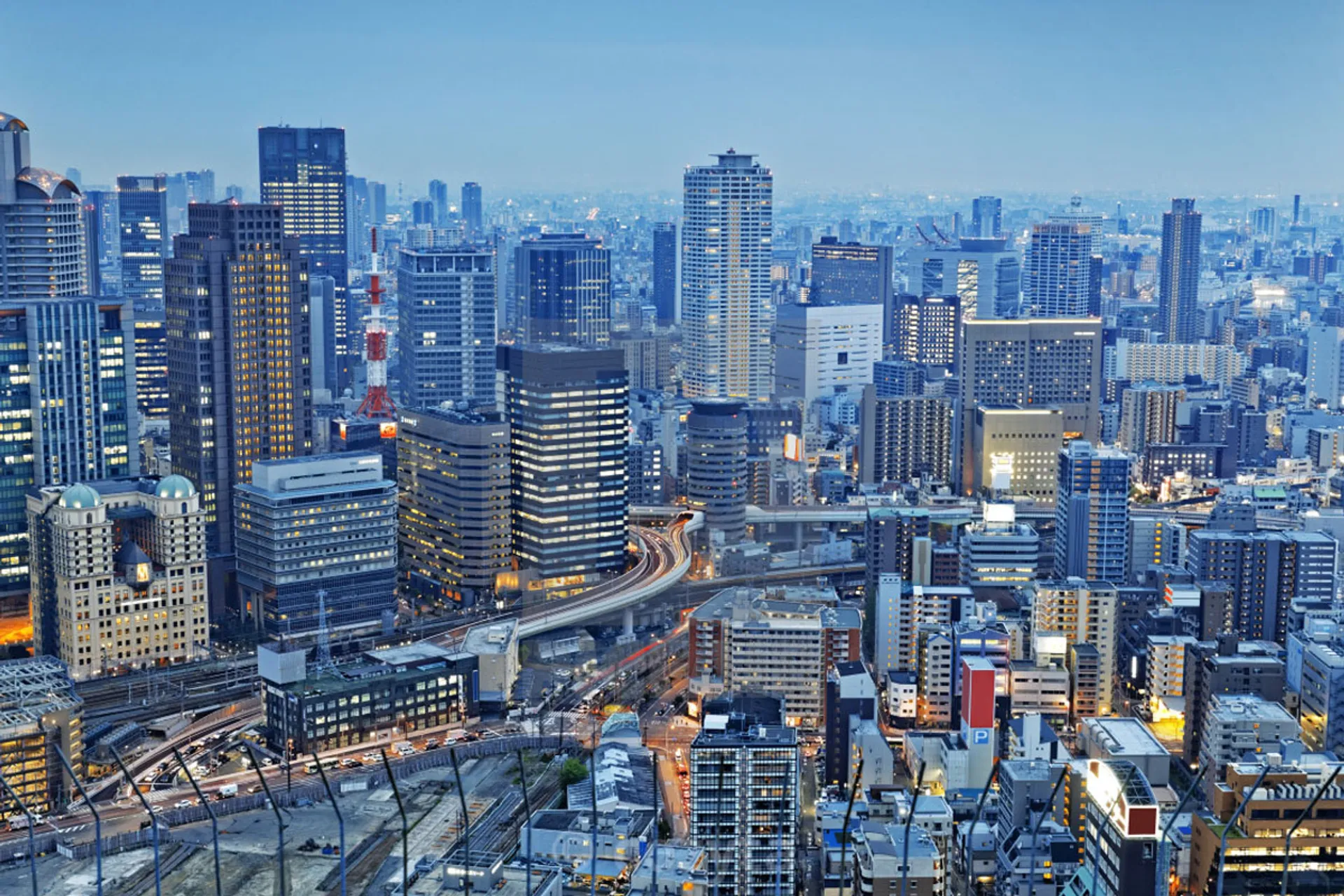
The rainy season usually occurs right before the hot, humid summer. Cities like Tokyo and Kyoto are often uncomfortably hot and are best avoided during the peak summer months of July and August.
Most tourists around the world want to visit Japan to see cherry blossoms, so it’s no surprise that cherry blossom season is the busiest travel time of the year. Domestic tourists also take advantage of Golden Week to go sightseeing and vacation, so trains, hotels and famous attractions can often be overcrowded or fully booked.

Cheapest time to travel to Japan
Japan is known to be an expensive country for visitors. But since the 2020 Tokyo Olympics, a wide range of new hotels have opened, so tourists have more options with more reasonable prices.

Besides, according to research, the number of tourists coming to Japan is usually lowest during the period from mid-January to March. This means, visitors will enjoy more incentives from ticket prices, hotel costs to other sightseeing activities.
Best time to visit Japan for food lovers

Japan is a great destination for food lovers. Therefore, if you want to enjoy a specialty or a traditional dish in Japan, you should also find out the right time to avoid regrettably missing out. Dishes to enjoy in the summer include light, cool sōmen noodles, kakigōri shaved ice, and extremely savory unagi eel. Autumn is a “paradise” for matsutake mushrooms, sweet potatoes and Pacific sanma mackerel. Winter is the ideal time to enjoy nabe hot pot, citrus fruits and kaki persimmons. Meanwhile, spring is associated with sea bream, takenoko bamboo shoots and mochi sakura rice cakes.


Which is the best season to travel to Japan?
Japan has many beautiful landscapes and unique culture, so this place is always a favorite destination for any tourist. To know which season is best to travel to Japan, let’s learn about the characteristics of each season!
Spring (March-April) (# when is the best time to visit japan)
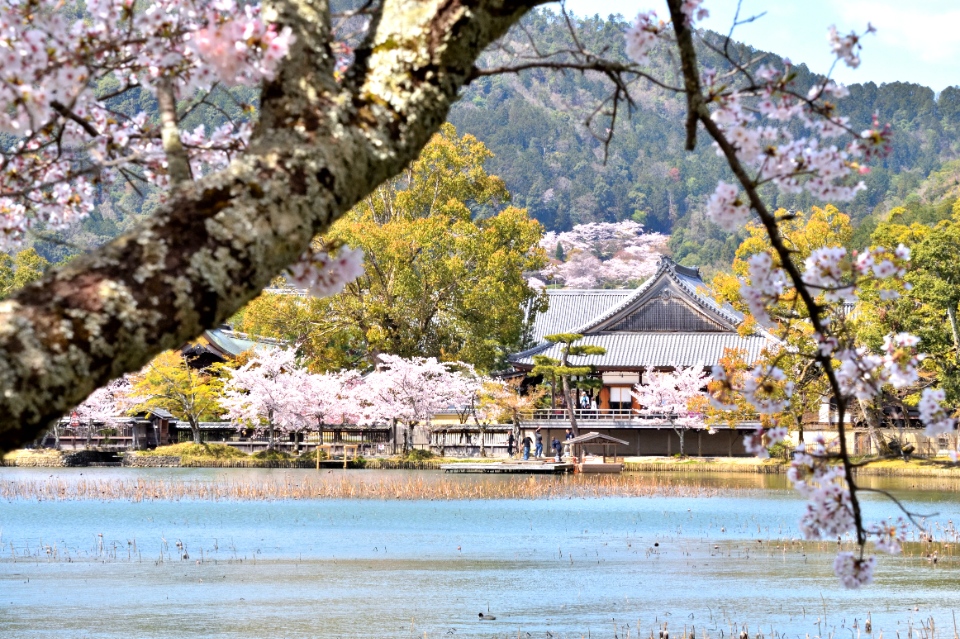
At this time, the temperature in Japan is still quite cold and the humidity has not reached high levels, so it is convenient for tourism activities. Besides, Japanese spring is famous for many festivals and interesting flower viewing sessions, especially cherry blossoms. Japanese people often gather friends and family to eat and enjoy under the cherry blossom trees. Cherry blossoms bloom from late March to late April, usually they only bloom beautifully for 10 days if the weather is favorable.

Traveling to Japan in spring not only has cherry blossoms, but also many other beautiful flowers such as: shibazakura (moss phlox) flowers, Canola flowers, azalea flowers, wisteria flowers… Some spring festivals in Japan that you can refer to:
- March 15: Otaue Rice Planting Festival at Kasuga Shrine, Nara performing a classical dance from 1,000 years ago
- April 1 – 30: Miyako Odori (Spring Dance) in Kyoto, performed by dancers known as “Maiko”
- April 14 – 15: Takayama Festival of Hie Shrine, Takayama with floats passing through the streets.
Here are some spring popular places to visit in Japan:
Shinjuku Gyoen National Garden

This is one of the famous tourist places in Tokyo founded in 1906. Shinjuku Gyoen has beautiful scenery and harmonious architecture. Including traditional Japanese gardens, French gardens and English gardens, each garden has its own characteristics. In spring, thousands of cherry trees bloom across the entire area of Shinjuku Gyoen National Garden, creating a beautiful scene, attracting many people to enjoy the scenery.
Hirosaki Castle
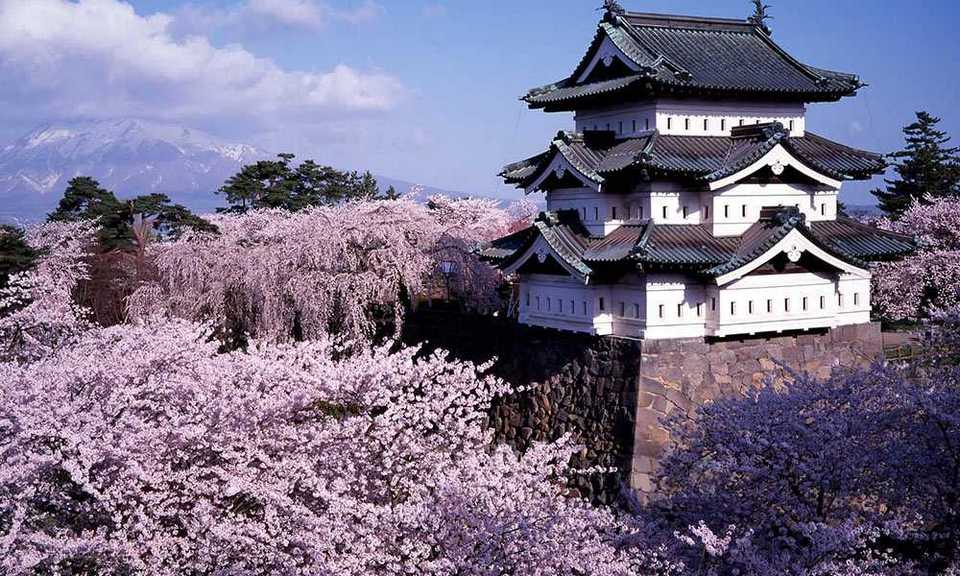
Built in the 17th century, this castle is located in Hirosaki city, northern Honshu island. In spring, Hirosaki Castle becomes especially charming when about 2,600 cherry trees bloom on the castle’s vast grounds. When you visit, you will be captivated by the beautiful view of bright pink flowers. Visitors can stroll around the park, admire the castle’s unique architecture, and enjoy paintings and antiques at the Hirosaki Museum located on the castle grounds.
Chureito Pagoda

Also known as Arakurayama Sengen Chureito, this is one of the attractive tourist place in Yamanashi Prefecture. This temple is famous for its landscape and wonderful views of Mount Fuji. In spring, the cherry trees around Chureito Pagoda bloom with brilliant petals, you will be immersed in the enchanting beauty of a peaceful space.
Fuji mountain

Mount Fuji is located on the island of Honshu, is the highest mountain in Japan with an altitude of 3,776.24m, is the 7th highest peak in the world and is a famous scenic spot and historical site in Japan.
Tokyo Tower
Tokyo Tower is a communications and observation tower located in the Shibakoen area, Minato district, Tokyo, Japan. This tower has a height of 332.9m and is the second tallest in Japan after Tokyo Sky Tree Tower. The Tokyo Tower project was inspired by the Eiffel Tower in France and built.

Tokyo Tower was built in 1958, the tower is used for tourism and antenna rental purposes. To date, more than 150 million tourists have visited Tokyo Tower since its inauguration. Tokyo Tower is equipped with a beautiful lighting system with Landmark Light (light glowing toward the inside of the tower) and Diamond Vale (light glowing toward the outside of the tower). Besides its original broadcasting purpose, Tokyo Tower is considered a symbol of the Japanese economy after World War II.
Ueno Park

Ueno Park is one of the most popular cherry blossom viewing spots in Tokyo during the spring cherry blossom season. Thousands of people come to the park to admire the beautiful cherry trees that look like clouds. The area around Shinobazu Pond is extremely impressive, especially the narrow path lined with cherry trees that cuts through the pond. Shinobazunoike Benten-do is the center of all beauty.
Nara Park

Nara Park is located in the heart of the city with more than 1,500 cherry trees blooming each season. Especially when visiting this park, you can also watch deer leisurely roaming, creating a poetic and peaceful scene.
Summer (June – August) (# what is the best month to travel to japan)
If you miss the trip to see cherry blossoms in spring, then summer is also considered an ideal time. Summer in Japan is often hot and humid, making it a time for swimming and other entertainment activities. The hot and humid heat bringing persistent rains has created conditions for hydrangeas to bloom. Besides, this is also the season of festivals and fireworks displays across the country. On festival days, people gather to dance folk dances, make traditional foods, hang lanterns, etc. As for the fireworks display – a favorite event of the Japanese, it is performed extremely grandly with sparkling, brilliant fireworks in the sky.

Some unique festivals when traveling to Japan in the summer include:
- Sumidagawa Festival: “Fireworks party” attracts millions of tourists to Japan.
- Mid-June: Sanno Festival of Hie Shrine, Tokyo with a parade of the portable shrine through the busy streets of Akasaka district.
- Tanabata Festival – Stargazing: Originated from China, considered the most romantic festival in Japan
- The 2nd Saturday of June: Chagu-chagu Umakko Festival (Festival of Horses) in Morioka with a parade of colorfully costumed horses.
- July 1-15: Hakata Gion Yamakasa Festival at the top of Mount Fukuoka with a parade of giant floats.
- July 1-31: Gion Festival – the largest festival in Kyoto, commemorating the 9th century.

In addition, visitors can still avoid the heat in the snowy land of Hokkaido in Japan. Although there is no snow in the summer, the cool cold air of the north is still there for you to experience.
Places that many tourists choose when traveling in the summer include:
Yakushima Island

This is a small island located in the south of Japan, known for its beautiful natural landscape and majestic primeval rain forest. Summer on Yakushima Island is famous for its cool climate. Tourists visiting the island in the summer will have the opportunity to admire ancient trees hundreds of years old and discover many unique flora and fauna species. This place is also recognized by UNESCO as a World Natural Heritage.
Shikisai-no-oka Flower Garden

This flower garden has a beautiful setting and is a paradise for flower lovers. During the summer, Shikisai-no-oka garden comes alive with countless flowers and vibrant colors. The garden is divided into many areas, each with its own unique flower colors and fragrances. Some popular flower species at Shikisai-no-oka flower garden are: lavender, sunflowers, forget-me-nots, lilies… Visitors can walk around this flower garden or rent a bicycle to explore the beautiful scenery around.
Shirahama Beach
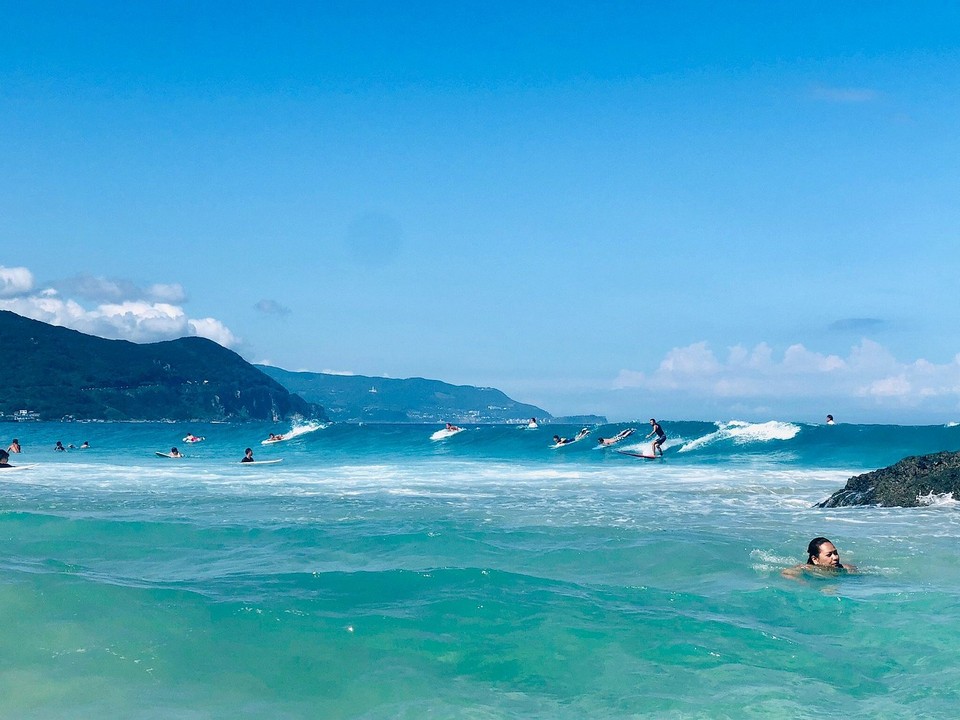
This is a very popular tourist destination in Japan, especially during the summer. Located in Shirahama City in Wakayama Prefecture, this beach is known for its smooth white sand and clear blue sea water. Visitors can enjoy swimming, windsurfing, scuba diving or participating in exciting water games. Not only has wonderful natural landscapes, Shirahama beach is also famous for its high-end resorts and hotels.
Okinawa Islands
Kabira Bay in Ishigaki Island is one of the wonderful sightseeing spots that you should definitely visit once in your life, it only takes about 40 minutes by car from Ishigaki to get here. Everything on Okinawa’s beach is sparkling and beautiful like a picture on postcards.

Coming here, you can spend relaxing moments on a glass boat and see colorful coral reefs, tropical fish swimming around on the transparent ocean floor and see a long stretch of fine white sand.. When it comes to summer, you definitely can’t miss swimming and the beach here will give you a very different feeling compared to the beaches you’ve been to before.
Hokkaido lavender season
Lavender season in Hokkaido Japan is one of the heavenly moments of the year. When summer begins, the vast fields in this area bloom in the gentle purple color of lavender, creating a beautiful picture that seems to only exist in fairy tales.

Lavender is a symbol of love and purity and in Hokkaido, this flower grows abundantly and densely. Soft, fluffy petals bloom in seemingly endless fields. The gentle scent of lavender spreads throughout the space, bringing a feeling of relaxation and calmness.
Autumn (September – November) (# what is the best time to travel to japan)

Which season is the most beautiful to travel to Japan, definitely no season is as beautiful as autumn with red and yellow leaves. This autumn has cool weather, clear blue sky, soft yellow sunshine, extremely suitable for sightseeing and picnics. Because of this, autumn is considered the best time to travel to Japan. Especially in the fall – red leaf season, when the green leaves change color to yellow and red and cover the roads, it is extremely romantic and impressive making tourists flock here to enjoy and take photos. The red leaf season in Japan begins from September to November.

The best destinations you should explore in autumn such as: Ancient capital Kyoto – autumn paradise in the land of the rising sun, Fuji mountain, Towada Hachimantai National Park, Nikko National Park, sightseeing on the Hozu River, Mount Takao…

You should also not miss some festivals this season such as:
- October 7 – 9: Kunchi Festival of Suwa Shrine, Nagasaki featuring Chinese lion dance.
- October 9 – 10: Hachimangu Shrine’s Takayama Festival with an extremely brilliant boat parade.
- Mid-October: Nagoya City Festival with portrait parade of three feudal lords.
- October 14 – 15: Kenka Matsuri (Fighting Festival) of Matsubara Temple, Himeji.
- Toshogu Shrine’s Autumn Festival in Nikko: takes place on October 17.

Destinations that tourists should not miss if traveling at this time are:
Lake Kawaguchi
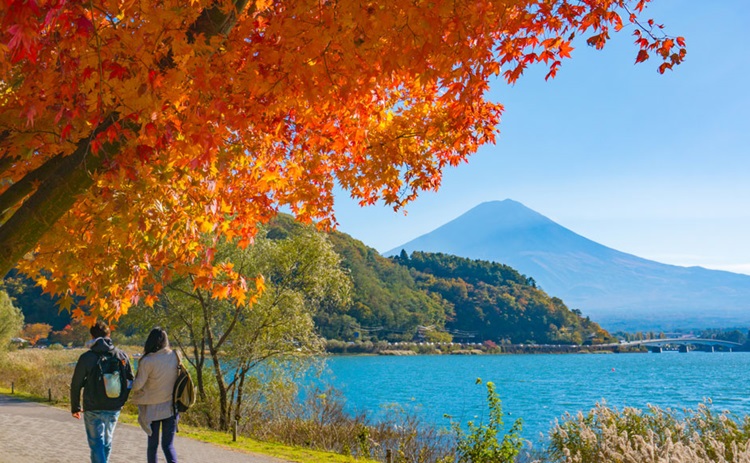
Fall is a great time to explore the natural beauty of this tourist destination. Lake Kawaguchi is like a fairy painting with beautiful scenery. The trees on the lake shore are covered with yellow, orange, and red foliage, creating a romantic scene and making a deep impression on visitors. This landscape is even more brilliant when reflected on the clear blue water of Lake Kawaguchi. Visitors can walk along the lake shore to explore the surrounding nature or rent a boat to swim on the lake and admire the beautiful autumn landscape.
Rikugi-en Park

This is considered one of Tokyo’s most beautiful parks. Autumn is the time when the trees in Rikugi-en park begin to turn into vibrant colors, creating a captivating landscape. The yellow, orange, red petals and brown leaves make the park even more poetic. Visitors can stroll around Rikugi-en park to explore and enjoy the natural beauty and fresh air.
Daisetsuzan National Park

One of the best places to visit in the fall. Enjoy autumn at Daisetsuzan National Park, a mountain range with an altitude of about 2000m. It is also one of the earliest places to welcome autumn in Japan. Here, autumn begins at the end of September and lasts until October. The maple trees around the Daisetsuzan mountain area turn bright red, creating a spectacular scene.
Kiyomizu-dera Temple
Admire the red leaves at Kiyomizu-dera Temple, a symbol in Kyoto. One of the ideal places for tourists in the fall. The leaves are gradually changing from green to bright yellow-red, creating a poetic scene. Visitors also have the opportunity to try traditional Japanese tea at teahouses in the area.

The best time to see autumn red leaves is November, which has been updated on the autumn leaf viewing calendar in Japan. When arriving at the most beautiful time of autumn, visitors will be immersed in the autumn colors of maple and sakura trees in the fall. Along with the temple’s long history, visitors can overlook the entire city of Kyoto.
Osaka Castle
Located in the tourist center of Osaka, this is a castle with a huge area and unique architectural features. To this day, this place still maintains its ancient and mysterious features, making visitors admire every time they visit.
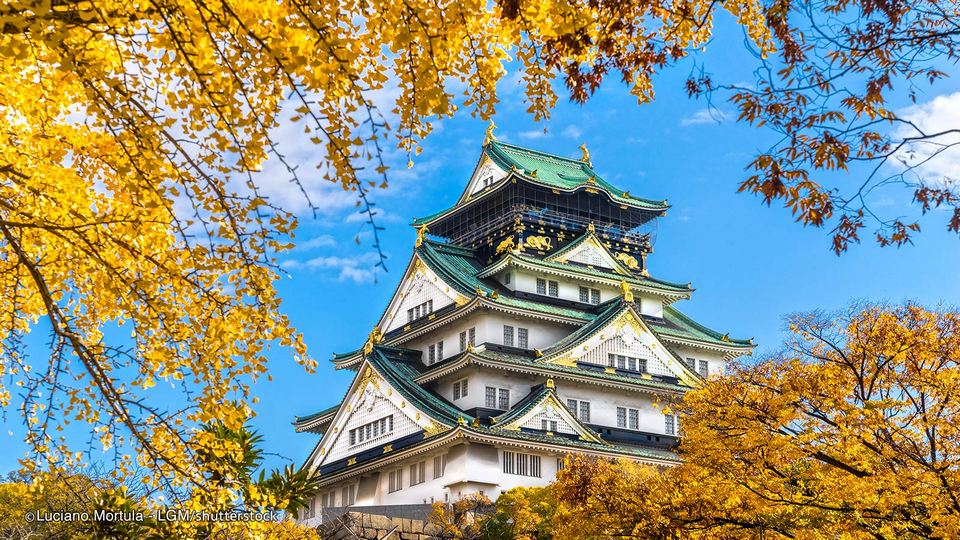
Admiring Osaka Castle in autumn leaves is one of the great places for tourists in the fall. Red and yellow colors cover the grounds around the castle, creating a majestic picture. The time on the autumn leaf viewing calendar in Japan is late November to early December.
During the fall, Osaka Castle often hosts fall events and festivals. Allowing visitors to admire the traditional beauty imbued with Japanese culture and art. You can tour the castle and enjoy the historical Japanese atmosphere along with the beautiful scenery of red leaves.
Winter (December – February) (# what time of year is it best to visit japan)

Japanese winter usually lasts from December to February of the following year. During this time, the temperature drops with snow. That’s why going to Japan in winter, you will experience the feeling of skiing and watching snow fall. Snow usually falls the most from January to early February, and usually only covers northern and western Japan. Some snowy regions such as: Hokkaido Island, Nagano, Fukui, Akita, Yamagata, Fukushima, Aomori, Iwate,… To experience winter in Japan, you can ski in the thick snowfields in the Alps or Hokkaido. Besides, don’t forget to enjoy a relaxing soak in the outdoor Onsen hot springs in winter. Being able to watch the snow while feeling the warmth in the cold air is also a wonderful thing.

Some winter festivals in Japan are:
- December 17 – 19: Hagoita-ichi Festival (Badminton Fair) of Asakusa Kannon Temple, Tokyo.
- December 31: Okera Mairi Festival (Sacred Fire Festival) of Yasaka Shrine, Kyoto.
- First 7 days of February: Snow Festival in Sapporo, Hokkaido – the most famous snow festival in Japan. When you come here, you will admire many giant snow and ice sculptures.
- Nagasaki Lantern Festival: often takes place in China Town to celebrate the New Year.
Winter in Japan offers an exciting and special experience for visitors. With a cold climate and snow everywhere, winter is a great time to explore the unique beauty of this country. Some prominent destinations in winter are:
Zao Snow Village
Located in northern Japan, this place is called the “land of white snow” with a cold climate and large amounts of snow in winter. In addition to admiring the white snow landscape, visitors can also participate in fun winter activities at Zao Snow Village such as: Skiing, snowballing, building human figures…
Kenrokuen Garden

Located in Kanazawa city, this is one of Japan’s most famous royal gardens. During winter, Kenrokuen Garden is covered with a layer of beautiful white snow. The natural landscapes in the garden become more special and majestic when dressed in snow. The poetic and peaceful atmosphere of Kenrokuen Garden in winter is a great choice for those who love beautiful scenery and want to find tranquility and relaxation.
Shirakawago ancient village
Japan’s unique cultural identity can make any tourist feel satisfied when visiting. You can also combine a skiing holiday with a trip to explore the wonderful “land of the rising sun”.

With its ancient and peaceful beauty, Shirakawago is one of those places that can captivate your mind from the first moment. Separated from the outside world by high mountains, this small village was only “discovered” about decades years ago. The impression that Shirakawago gives visitors is of a beautiful small village with thatched roofs of wooden houses, gingerbread and unique culture.
Fuji mountain

In winter, the entire forest of trees and grass in Mount Fuji seems to fall asleep, white snow covers everywhere. Somewhere in the afternoons, when the sunlight falls behind the mountains, we can admire a very poetic beauty.
Snow Monkey Park (Jigokudani Yaen Koen)

Have you ever seen adorable, mischievous monkeys living in cold snow and ice? Come to Jigoku Dani Monkey Park to experience unique things. Bathing in hot springs is familiar, but bathing in hot springs with monkeys is something you definitely haven’t tried. Trust me, this will be one of the most memorable baths of your life.
Which is the best month to travel to Japan?
January
January is the coldest time of the year with the temperature dropping to only about 10 degrees Celsius, there are many areas with snow. Coming to Japan at this time, you can experience warming activities such as skiing, “chill chill” soaking in natural hot springs.
In addition, January in Japan also has many beautiful flowers and unique festivals such as apricot flowers, daffodils, grass burning festival, Shikotsu Lake snow festival,…

Not only that, January is also the time of the Shogatsu Festival (Japanese New Year), where everyone will wish each other a happy and prosperous new year. One thing to note is that during this New Year, many stores will be closed, so find out in advance to avoid the situation of not having a place to eat or drink!
February
The weather in February is still cold due to the influence of a long cold spell, so the snow at this time is extremely thick and soft, very suitable for tourists who love to participate in skiing and ice activities.
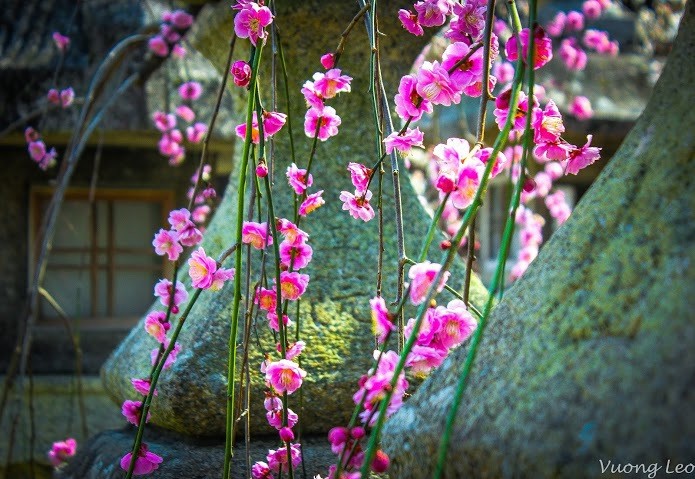
In some southern regions of Japan such as Tokya or Osaka,… the weather is starting to get warmer, with rays of sunlight appearing. On the contrary, the northern provinces of Japan such as Hokkaido are still covered by cold and dense snow and ice.

When you come to Japan in February, you can participate in the Sapporo Festival – one of the extremely famous winter festivals of this Land of the Rising Sun. In addition, you can also see apricot flowers – Ume at Kairakuen garden in Mito, Ibaraki, Hanegi park in Tokyo or Osaka castle park.
March – Experience the cherry blossom festival
Japan in March begins to have more sunshine, the weather gradually warms up, making it suitable for you to walk and enjoy all the flowers here, especially cherry blossoms blooming everywhere. The traditional Hanami festival – cherry blossom festival usually begins between March 15 and 30. At this time, Japanese people often go on picnics with their families and friends, cook together, and celebrate, party, eat, drink and enjoy flowers together.

In addition, March also has an Anime festival – Japan’s famous culture around the world, which is also a very large and famous festival in Japan. When participating in this festival, you will see countless cosplay performances with extremely famous and unique characters by young people here.
At night in March, the temperatures around 13 degrees Celsius. Although quite comfortable, there will still be a temperature difference between day and night, so you should wear warm clothes when going out at night!
April – Spring travel to Japan
April is the middle of spring, the cold air at this time will subside, instead it will become much warmer and more pleasant. This is the best month for you to travel to Japan and explore any destination in this country.

Two famous flowers associated with Japan’s tourism – cherry blossoms and wisteria – will bloom beautifully in April every year, so don’t miss the opportunity to see and take “virtual life” photos. Keep memorable moments! In addition, you can also see Nanohana rapeseed flowers during the Qingming period (April 5 – April 19), brightly yellow combined with warm rays of sunlight.

May – Many flowers bloom
Compared to April, the temperature in May in Japan increases significantly because it almost no longer feels cold, and even feels hot when participating in long outdoor activities. The average temperature at this time is usually about 20 degrees, the lowest temperature is about 10 degrees Celsius and the highest is about 32 degrees Celsius. Although it is warm, there will still be a temperature difference between day and night, so remember to prepare both short sleeves and long sleeves!
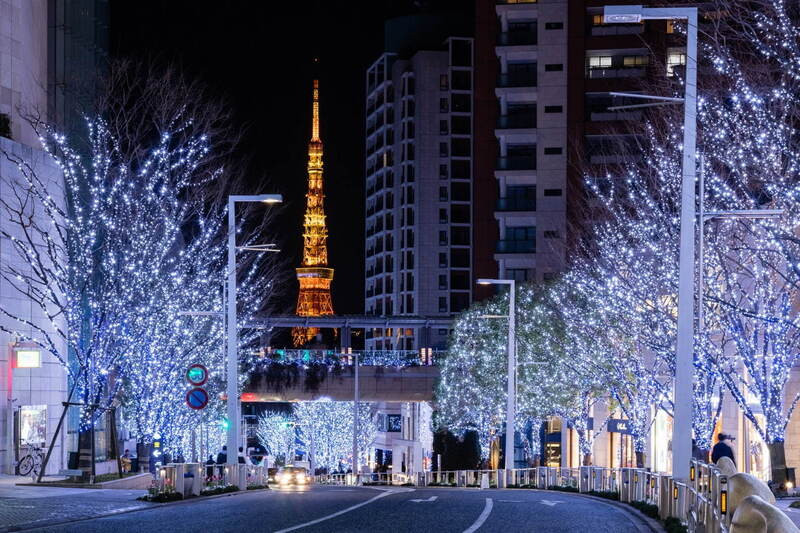
May is the time when Tokyo is filled with festivals, the most prominent of which is the Sanja Matsuri festival that takes place on the 3rd weekend of May each year. This festival impresses visitors with the parade of more than 100 mikoshi floats being carried by people on every street. At the end of May there is also an extremely popular Roppongi Art Night, which you can experience on the weekend. Coming to Japan at this time, you can also see Wisteria flowers, iris flowers and moss phnox flowers blooming.
June – No rain in Hokkaido
The rainy season comes at the end of June, appearing in most areas in Japan, so you need to bring a raincoat or umbrella if you want to leave the hotel and go out sightseeing. However, you can choose to travel to the northernmost archipelago of Hokkaido because this is the only place in Japan where it does not rain in June.
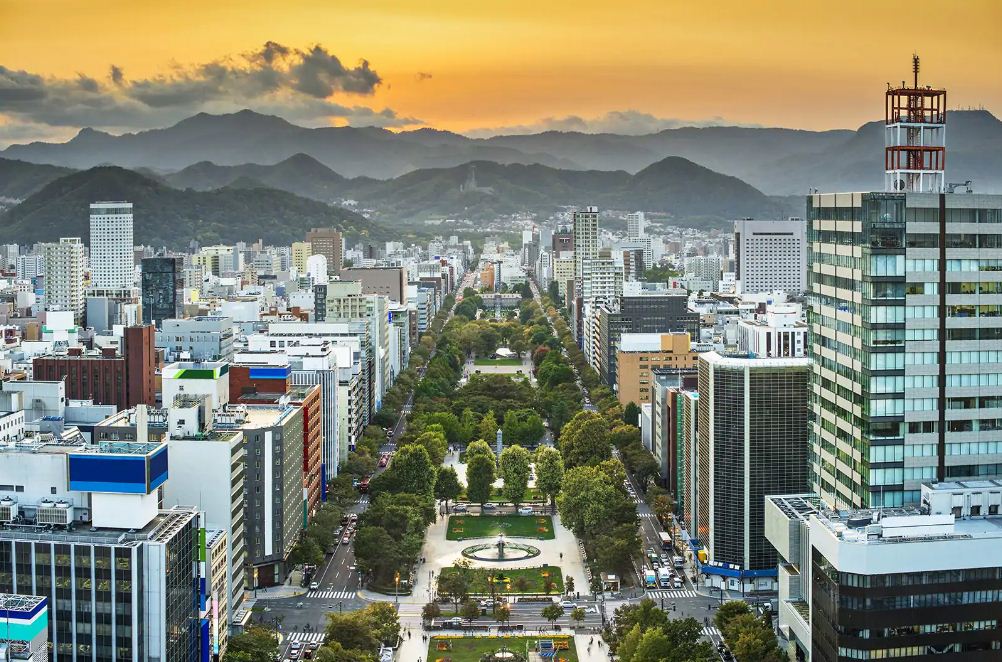
Although June is not the peak tourist season, many tourists still choose to visit and explore culture and cuisine in the land of cherry blossoms. In addition, you can also visit beautiful beaches here such as: Shiraham, Ozuna or Emerald,… to experience coral shopping and have fun with many exciting underwater activities.
July – Bright yellow sunflowers
The hottest time of the year in Japan is July, the average temperature is in the range of 24 – 3 degrees Celsius, and there are still rains in July. However, this is a shower so it stops quickly, and also does not affect your trip much.

Don’t forget to visit Hokkaido in July to see with your own eyes the extremely brilliant beauty of millions of beautiful blooming sunflowers. In addition, you can also attend the biggest musical acts at Fuji Rock Festival. This is also the time when famous summer festivals take place such as: Tenjin Matsuri in Osaka, Gion Matsuri in Kyoto and hundreds of “hanabi taikai” (fireworks displays) performances held across the country.
August – Go to beaches
Temperatures in the Land of the Rising Sun range from 35 – 25 degrees Celsius, so remember to bring lots of light and airy clothes before going.
At this time, the weather is hot and uncomfortable, so avoid central cities like Osaka, Tokyo, Kyoto and go to the beaches in surrounding cities to enjoy a wonderful time on vacation.
September – Watching the Japanese rain
Because of harsh weather conditions and few tourist attractions to choose from, September is the time when tourists should not travel to Japan.
Although the weather is not too hot and less humid, this is the peak storm season, which often hits the coasts such as Kyushu, Okinawa and Shikoku, accompanied by heavy rains and strong winds. If you choose to go to Japan in September, remember to always bring an umbrella and check the weather forecast before leaving the hotel!
October – Vibrant festivals
September passed, bringing storms, and October came to give Japan favorable weather and countless beautiful early autumn scenes. With average temperatures ranging from 22 – 14 degrees Celsius in all areas, you will have the most comfortable vacation without having to worry about sightseeing or outdoor activities.

Traveling to Japan in October, visitors will be immersed in the extremely romantic scenery of trees changing leaves. You can also participate in many festivals from all over Japan: Matsue Suitoro water and light festival, Oktoberfest Yokohama, Tokyo’s annual performing arts festival or Halloween.
November – The season when trees change leaves
This is the best time to travel to Japan – November – the weather is very pleasant, not hot, with chilly winds. November is also the time when Japan is “dyed red” by thousands and millions of trees changing leaves. Take advantage of this time to admire and preserve these beautiful moments with your family and friends!

November has the traditional festival Shichi-Go-San (‘7-5-3’), where seven- or three-year-old girls and five-year-old boys dressed in colorful kimonos receive blessings. good luck at the Shinto shrines.
December – Experience celebrating New Year’s Eve in Japan
Japan in December has an average temperature of 12 – 4 degrees Celsius, day time is shorter than night and the sun sets in Tokyo at about 4:30 p.m. every day. This time there is the Hagoita-Ichi festival, held in mid-December from the 17th to the 19th at Asakusa Kanon Temple in Tokyo. In addition, you can also celebrate New Year’s Eve in Japan, eating buckwheat noodles – a quite interesting traditional activity here.

Which season is best to travel to Japan depends on each person’s preferences. Because each season in Japan has its own beauty, that’s why you should choose which month to travel to Japan and experience the beauty of the land of cherry blossoms in each season to have your own feelings.
Some best day tours, trips, activities and transfer services, tickets in, to and from Tokyo you can refer to
- Private Narita International Airport Transfers (NRT) for Tokyo 23 Wards, Hakone, or Karuizawa
- Private Haneda International Airport Transfers (HND) for Tokyo 23 Wards, Hakone, or Karuizawa
- Airport Limousine Bus Transfers from/to Narita and Haneda International Airport (Free Wifi Onboard)
- Tokyo Amazing Sightseeing Bus Day Tour
- Tokyo Highlights Private Day Tour
- Nikko Day Tour from Tokyo
- Mt Fuji & Hakone Day Tour: Lake Ashi & Ropeway Day Trip from Tokyo
- Nikko Cultural Day Tour from Tokyo
- Tokyo Subway Ticket (24, 48, or 72 Hours)
- Tokyo Skyliner and Tokyo Subway Ticket
- Shuttle Bus Transfers (One Way/Round Trip) from Shinjuku/Ikebukuro to Tokyo Disneyland or Tokyo DisneySea
- Tokyo Disney Resort Park Ticket
- Klook Pass Greater Tokyo
- SHIBUYA SKY Ticket
- Warner Bros. Studio Tour Tokyo – The Making of Harry Potter Ticket
- Skyliner Narita Airport Express Ticket
- TeamLab Planets Ticket
- TOKYO SKYTREE® Ticket
- Limousine Bus Narita or Haneda Airport to Tokyo
- Skyliner Narita Airport Express With Tokyo Subway Ticket
- JR Tokyo Wide Pass
- Sky Hop-on and Hop-off Bus Pass
- 4G Prepaid Sim Card (JP Airports Pick Up) for Japan
- 4G WiFi (BKK and DMK Airport Pick Up) for Japan (Unlimited Data)
- JR Pass for Whole Japan (7, 14, or 21 Days)

Are you looking for more Tokyo travel guide and top things to do in Tokyo: Tours, activities, attractions and other things? Read more: Tokyo itinerary 3 days — What to do in Tokyo in 3 days?
































![10 best airports in Asia in 2016 [RANKED] kuala-lumpur-international-airport-best airports in asia in 2016 by skytrax ratings](https://livingnomads.com/wp-content/uploads/2016/08/29/kuala-lumpur-international-airport-best-airports-in-asia-in-2016-by-skytrax-ratings-218x150.jpg)









